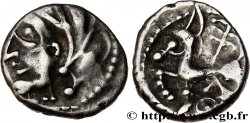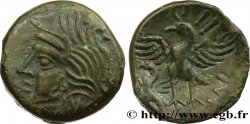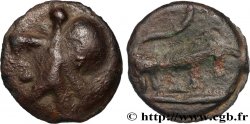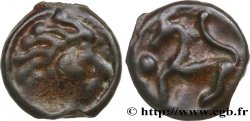bga_692628 - GALLIA - BITURIGES CUBI (Area of Bourges) Potin au bucrane et au cheval
100.00 €
Количество
Добавить в корзину

Тип Potin au bucrane et au cheval
Дата: Ier siècle avant J.-C.
Металл: potin
Диаметр: 18 mm
Ориентация осей монеты: 3 h.
Вес: 2,01 g.
Редкость: R3
Комментарии о состоянии
Monnaie ayant conservée de jolis détails au revers, et une très belle patine sombre
Лицевая сторона
Аверс: легенда: ANÉPIGRAPHE.
Аверс: описание: Bucrane accosté de deux esses, une croisette entre les cornes ; un grènetis en descendant d’une corne à l’autre et bourrelet périphérique.
Обратная сторона
Реверс: легенда: ANÉPIGRAPHE.
Реверс: Описание: Cavalier (?) à gauche ; grènetis perlé et bourrelet périphérique.
Комментарий
Monnaie cassée. Ce potin est très rare ; seulement connu par un exemplaire au musée de Zurich et de très rares en collections privées, c’est la seconde fois que nous le proposons à la vente après le bga_364110 de CELTIC 9 et nous n’en avons jamais vu passer d’autre en catalogues !
Le prototype du droit est clairement le potin des Rèmes au bucrane, lui-même inspiré du rare sesterce de Caius Antius Restio frappé vers 45 avant J.-C. Le revers au cheval n’a rien à voir avec l’ours du potin des Rèmes.
Le cavalier supposé n’est pas visible sur le n° 275 de Zurich (lui-même repris en dessin par A. Gaumann pour son n° 176). Le n° 24.5 de H. Patat correspond à notre monnaie, mais le cavalier pourrait n’être qu’une interprétation à partir de globules qui auraient fusé entre eux....
Le prototype du droit est clairement le potin des Rèmes au bucrane, lui-même inspiré du rare sesterce de Caius Antius Restio frappé vers 45 avant J.-C. Le revers au cheval n’a rien à voir avec l’ours du potin des Rèmes.
Le cavalier supposé n’est pas visible sur le n° 275 de Zurich (lui-même repris en dessin par A. Gaumann pour son n° 176). Le n° 24.5 de H. Patat correspond à notre monnaie, mais le cavalier pourrait n’être qu’une interprétation à partir de globules qui auraient fusé entre eux....







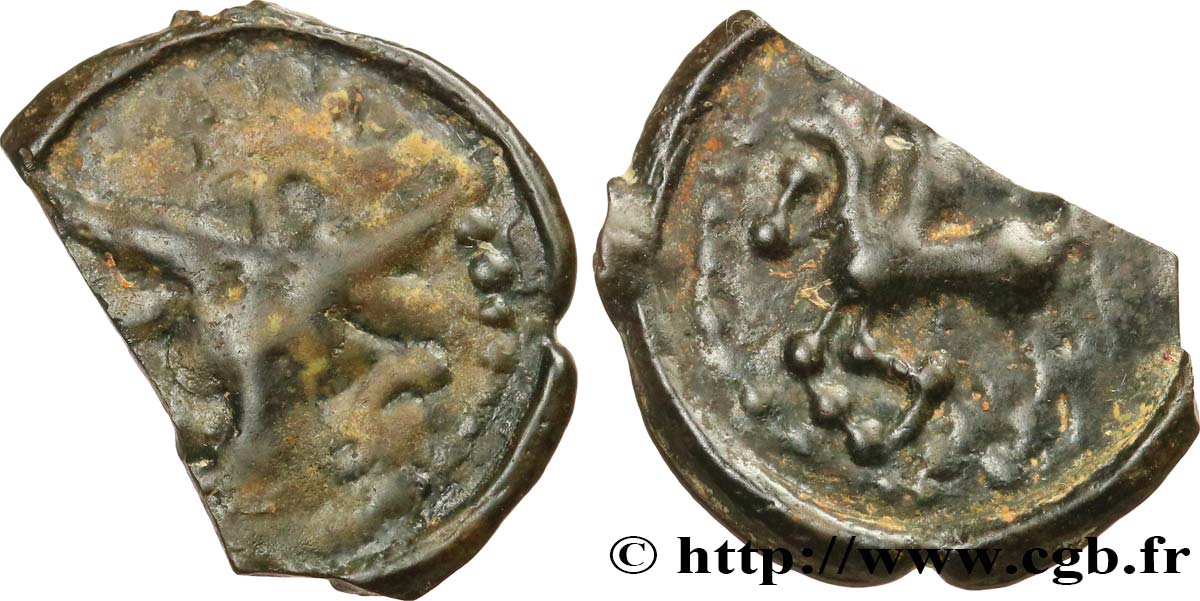
 Cообщить об ошибке
Cообщить об ошибке Распечатать страницу
Распечатать страницу Отправить мой выбор
Отправить мой выбор Задать вопрос
Задать вопрос Consign / sell
Consign / sell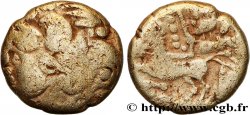
 Информация
Информация